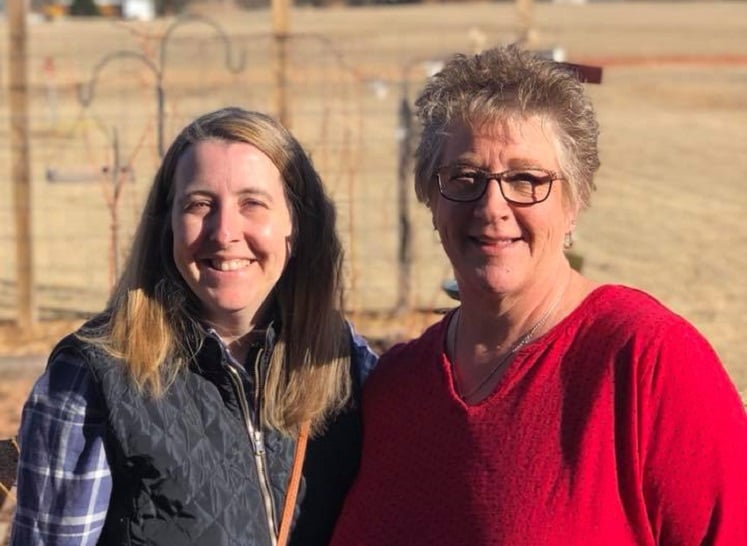Starting Your Spring Garden Series- Number 1
Who all is ready to start a Spring Garden? I can't wait! Something about spring is so exciting and promising! Lets get out there and get started!

DIY & Craft Projects|Essential Oil Recipes |Christmas DIY|Fall DIY|Frugal Tips
Spring Garden Tips:
We are excited to start a short gardening series with Lori Coats from My Raggety Herbs! If you're here in Oklahoma, you probably haven't planted that garden quite yet. We have had some cold weather! See some of our own tips for beginners, and also check out Lori's knowledgeable article.

Our Spring Garden Tips for New Gardeners:
- Cut the bottom off a milk jug and place over a new plant. This deters birds, and provides a mini “greenhouse” to protect your young plant from harsh sun and wind. If you have a strawberry plant or one very tempting to birds, this is an easy way to cover it up (provided the plant is not cramped inside the jug)
- Keep those toilet paper rolls or paper towel rolls. You can cut in half lengthwise to make biodegradable plant starters! Fill with dirt and start your seedling indoors, and then transplant the container when ready. Know which vegetables grow in the shade – don't expect full sun plants to give you a great harvest if you only have half a day of sunlight hitting your garden. Think root vegetables like carrots, beets and potatoes, or ground veggies like lettuce, cabbage, and greens.
- Consider adding a compost bin or pile. See our post HERE on how to add a Composting Worm Bin in a 5 gallon bucket.
- Add climbing veggies for visual interest. If you want to add some character and enjoy looking at your garden grow, you can add taller plants like tomatoes, cucumber, and certain squash plants.
- Sprinkle crushed egg shells around plants. They have calcium and also sharp edges to deter predators.

Our Favorite Gardening Products on Amazon:
Kink Control Garden Hose 100 ft
9 Herb Potted Window Herb Garden Set
Portable Kneeler Garden Chair with Pockets
Lifetime 4'x4′ Raised Garden Pack
Germination – The Promise of a Plant
BY LORI COATS OF MY RAGGETY HERBS
If you haven't followed Lori's page on Facebook, we can recommend it! She has tons of info for the beginner and more advanced gardener. So, stay tuned for more information and tips in the coming weeks! Who’s excited about learning to grow fresh vegetables, herbs, making your own apothecary and more? ~ Melissa & the CQ Team

Germinate: The beginning of growth in seeds, the action of sprouting, budding or shooting, above the soil. This occurs whenever a plant or seed begins to vegetate into leafy young plants. The breaking of dormancy in seeds or the sprouting of pollen grains deposited on a stigma.
As spring approaches, many backyard kitchen gardening enthusiasts have already started their seeds indoors anticipating warmer weather and the upcoming growing season. It is helpful to understand what germination is and then you can also understand why getting the jump on Mother Nature by starting seeds indoor is beneficial.

- Environmental factors must trigger the planted seed to grow. Some of these factors include depth of planting, water availability, temperature and light. The first change that occurs is that the tiny seed grows a root in order to access water underground. Next, shoots, or plant growth above the ground begins to appear. The seed sends a shoot towards the surface, where it will grow leaves to harvest energy from the sun. As the plant matures a study stem develops along with larger leaves and later fruit.
- Many things can cause poor germination. Old seeds that are no longer viable are sometimes used and their germination rate is zero to very low. Overwatering can cause the seedling to not have enough oxygen and drown. Planting seeds too deeply causes them to use all of their stored energy before reaching the soil surface. Dry conditions mean the plant doesn't have enough moisture to start the germination process and wind can often times batter tender seedlings before they have a chance to become established.
- If you are going to direct seed (plant your seeds directly into your garden soil and not start them ahead of time indoors) then it is important to be aware of the proper planting dates for your Hardiness Zone, monitor the weather and have your beds properly prepared. By doing a few simple things you can give your seeds their best possible chance to germinate. One handy trick when direct seeding your cool weather crops into a small area is to plant your seeds, water them in and then cover them with clear plastic wrap for the first few days to heat up the soil and encourage germination. You will need to secure the plastic wrap around the edges and ends to keep it secure and then remove it once you see shoots pressing against it.

There is nothing more exciting than to experience the mystery and wonder of dropping a tiny seed into the soil, covering it up and then seeing it reappear as a promising plant!
~ Thanks, Lori!
Interested in Natural and Organic Living?






